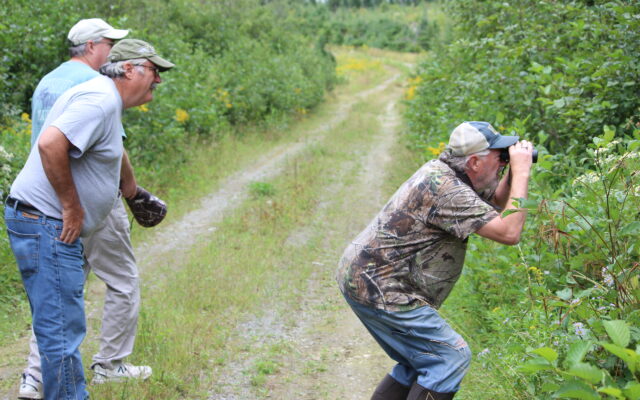
4 ways how you hunt in Maine could change in 2022
By Pete Warner, Bangor Daily News Staff
It has been another exciting year in the Maine outdoors.
We continue to be blessed with some of the best fishing, hunting, hiking and other recreational experiences available anywhere.
That said, there are some key topics involving Maine’s outdoors on which the Bangor Daily News will be keeping a close eye during the coming year.
Those issues include learning more about the presence of Per- and Polyfluoroalkyl substances (PFAS) in Maine’s fish and wildlife, how the state is battling winter ticks killing the the moose population, and the potential changes of the Department of Inland Fisheries and Wildlife’s any-deer permit system.
Forever chemicals
No issue is potentially more worrisome to those who fish, hunt and play in the Maine outdoors than the discovery of so-called forever chemicals in deer.
DIF&W in November warned hunters who had shot deer in and around Fairfield — where PFAS levels were determined by the Maine Department of Environmental Protection to be high — not to eat the venison of animals killed within a 5-mile radius of a farm where the chemicals were discovered in large quantities.
Five of eight deer tested in Fairfield had high levels of the toxins.
DIF&W also issued a warning not to consume fish taken from the Police Athletic League fish ponds in Fairfield, a designated location for youth fishing.
Fairfield may well be the tip of the iceberg concerning contaminated wildlife in Maine. Scheduled DEP testing of sites in 34 towns may well show that not only deer, but moose, turkeys and fish living close to potential PFAS “hot spots” also are being affected.
Should such testing reveal widespread contamination, the state will be compelled to issue advisories that may significantly limit hunting and fishing in some places for years to come.
Winter ticks in moose
Winter ticks in Maine, which have proliferated due to the warmer temperatures resulting from global warming, remain the greatest threat to the state’s largest game animal.
Winter ticks take a heavy toll on moose calves which, in addition to resulting in long, slow deaths for the animals, hampers the reproductive cycle in significant ways.
In an effort to better understand and combat that dynamic, DIF&W biologists during the fall of 2021 conducted the state’s first adaptive moose hunt. The experiment, performed in the western half of Wildlife Management District 4, is designed to significantly reduce the moose population in an area by harvesting more cows and calves.
The hope is that having fewer hosts on which to feed will mean winter ticks can’t survive.
The project, which began with aerial surveys of moose in the region and fitting many calves with GPS collars, will continue with another round this winter.
Prior to next season, DIF&W will study the results of the inaugural adaptive hunt and alter the process if needed to reach its goal of reducing the tick population.
Any-deer permit system overhaul
DIF&W biologists have struggled in recent years to get enough hunters to kill female deer in key areas of the state that are overpopulated with the animals.
The state hopes to achieve a higher doe harvest in 2022 by implementing a revamped system for what would be called “antlerless” permits. It has failed to meet its goals despite issuing a record number of so-called “doe tags” in each of the last two years, including 153,910 in 2021.
The final plan, which is expected to go to the Legislature early next year, likely will allow permit holders to shoot an antlerless deer in a specific WMD, in addition to a buck from any zone. However, hunters probably will only be considered for two WMDs in which to utilize an antlerless permit.
The change, designed to increase the doe harvest, also would mean many fewer antlerless permits will be available. They are expected to be accompanied by a fee, the amount of which has yet to be determined.
Additional funds also might be generated by selling any excess permits
In WMDs where there are fewer antlerless permit applicants than there are permits allocated, it has been proposed that any excess permits — now known as “bonus permits,” be available for sale. That would give hunters not chosen in a scaled-down antlerless lottery a chance to target another doe.
This year, hunters in Maine harvested the most deer since 1968, which at last count was 38,916 animals.
COVID-19 in wildlife
Even though scientists have not discovered any correlation between the two, the 2021 discovery of COVID-19 in Missouri white-tailed deer, in addition to humans, was worth noting.
The study suggested that deer somehow contracted the coronavirus from humans. And even though the animals did not appear to exhibit any symptoms or effects of having the disease, some scientists worry COVID-19 in the deer population could lead to a new strain that could be contracted by humans.
In Maine, DIF&W has not yet studied COVID-19 in deer.